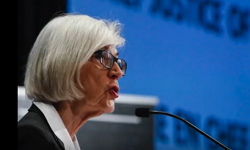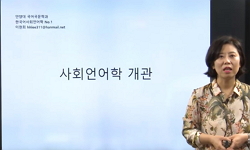The purpose of this study was to compare the 5 OEs of Korean gifted elementary and middle school students and non-gifted, and to find out the gender differences and level of school differences to clarify the possibility of identification instrument of...
http://chineseinput.net/에서 pinyin(병음)방식으로 중국어를 변환할 수 있습니다.
변환된 중국어를 복사하여 사용하시면 됩니다.
- 中文 을 입력하시려면 zhongwen을 입력하시고 space를누르시면됩니다.
- 北京 을 입력하시려면 beijing을 입력하시고 space를 누르시면 됩니다.

영재학생과 일반학생의 과흥분성 비교 및 영재의 성별, 학교 급별에 따른 차이 분석 = A Comparison of the Overexcitabilities in Gifted and Non-gifted Students, Gender, and School Levels
한글로보기https://www.riss.kr/link?id=A82649235
- 저자
- 발행기관
- 학술지명
- 권호사항
-
발행연도
2011
-
작성언어
Korean
-
주제어
과흥분성 ; 영재학생 ; 일반학생 ; 성별 ; 학교 급별 ; Overexcitability ; Gifted Students ; Non-gifted Students ; Gender ; School Level
-
KDC
379
-
등재정보
KCI등재
-
자료형태
학술저널
- 발행기관 URL
-
수록면
741-760(20쪽)
-
KCI 피인용횟수
8
- 제공처
-
0
상세조회 -
0
다운로드
부가정보
다국어 초록 (Multilingual Abstract)
The purpose of this study was to compare the 5 OEs of Korean gifted elementary and middle school students and non-gifted, and to find out the gender differences and level of school differences to clarify the possibility of identification instrument of giftedness based on the 5 OEs as the affective factor of giftedness. Total subjects were 270 in this study. Among them, gifted group were 74, and non-gifted group were 196. Boys were 202, and girls were 168. Elementary students were 34, middle school students were 40 within the gifted group. OEQII (Kim, 2008) were modified and used for elementary students. The result of this study were as follows. First, the level of 5 OEs of gifted students was significantly higher than non-gifted students. Second, gender differences were found. Total OEs and sensory OE and emotional OE of girls were significantly higher than boys'. Third, there were significant interaction effects among gifted and non-gifted and gender factor in total OEs and psychomotor OE and sensory OE. Fourth, there was no significantly differences of 5 OEs between elementary and middle school gifted students, which may be interpreted that OEs were consistent affective factors of giftedness. OEs were discussed as the possibility of identification instrument of giftedness.
국문 초록 (Abstract)
본 연구의 목적은 영재학생과 일반학생의 과흥분성 차이를 조사하고, 영재학생의 성별 및 학교급별에 따라 차이가 있는지 조사하는 것이다. 본 연구의 대상은 경기도 소재 P 교육지원청 산...
본 연구의 목적은 영재학생과 일반학생의 과흥분성 차이를 조사하고, 영재학생의 성별 및 학교급별에 따라 차이가 있는지 조사하는 것이다. 본 연구의 대상은 경기도 소재 P 교육지원청 산하 영재교육원 영재학생 74명과 일반학생 196명으로 구성되었다. 과흥분성 측정도구로는 김영아(2008)의 연구에서 타당화가 검증된 OEQⅡ 검사지를 초등학생 수준에 맞게 수정하여 사용하였다. 본 연구를 통해 얻은 결과는 다음과 같다. 첫째, 영재학생과 일반학생의 과흥분성 을 비교한 결과 과흥분성 총점 및 5가지 하위영역모두에서 유의미가 차이가 나타났다. 이는 과흥분성이 영재와 일반학생을 판별하는 도구로 활용이 가능함을 시사한다. 둘째, 영재학생의 성별에 따른 과흥분성을 비교한 결과 과흥분성 총점에서 여학생 영재가 남학생 영재에 비해 유의미하게 높게 나타났다. 과흥분성 하위영역 중에서는 감각적 과흥분성, 감성적 과흥분성 영역에서 여학생 영재가 유의미하게 높게 나타났다. 셋째, 영재와 일반학생, 그리고 성별에 따른 상호작용 효과를 조사한 결과 과흥분성 총점에서 학생, 성별에 따른 유의미한 상호작용 효과가 나타났다. 과흥분성의 하위영역 중에서는 심체적 과흥분성, 감각적 과흥분성 영역에서 유의미한 상호작용 효과가 나타났다. 넷째, 영재학생의 학교 급별에 따른 과흥분성을 비교한 결과 초등학교 영재학생과 중학교 영재의 과흥분성에는 통계적으로 유의미한 차이가 나타나지 않았다. 이러한 결과를 근거로 할 때, 과흥분성이 영재의 일관성 있는 특성임을 시사하는 것으로 영재판별도구로서의 활용 가능성이 논의되었다.
참고문헌 (Reference)
1 서현우, "초등학교 영재학생의 과흥분성 행동특성 요인과 학교 적응과의 관계 연구" 건국대학교 2011
2 이수현, "초등학교 영재 아동의 다중지능과 과흥분성의 관계 연구" 고려대학교 2009
3 김희정, "초등 영재아동의 과흥분성,사고양식,학습양식 간의 관계 탐색" 인천대학교 2009
4 유형기, "초등 영재아동과 일반아동의 지능,창의성,과흥분성에 관한 연구" 인천대학교 2009
5 홍희민, "초등 미술 영재아의 인지적 정의적 특성 분석:창의성과 과흥분성을 중심으로" 서울교육대학교 2010
6 김미영, "일반학급에서의 영재학생지도를 위한 교수-학습자료의 개발 및 적용" 건국대학교 2005
7 윤여홍, "영재학생의 정서적 특성에 관한 임상연구:정신건강을 위한 지도" 6 : 53-71, 1996
8 윤여홍, "영재의 심리적 특성과 정서발달을 위한 상담" 19 : 79-101, 2000
9 이미순, "영재상담" 박학사 2008
10 박성익, "영재교육학원론" 교육과학사 2003
1 서현우, "초등학교 영재학생의 과흥분성 행동특성 요인과 학교 적응과의 관계 연구" 건국대학교 2011
2 이수현, "초등학교 영재 아동의 다중지능과 과흥분성의 관계 연구" 고려대학교 2009
3 김희정, "초등 영재아동의 과흥분성,사고양식,학습양식 간의 관계 탐색" 인천대학교 2009
4 유형기, "초등 영재아동과 일반아동의 지능,창의성,과흥분성에 관한 연구" 인천대학교 2009
5 홍희민, "초등 미술 영재아의 인지적 정의적 특성 분석:창의성과 과흥분성을 중심으로" 서울교육대학교 2010
6 김미영, "일반학급에서의 영재학생지도를 위한 교수-학습자료의 개발 및 적용" 건국대학교 2005
7 윤여홍, "영재학생의 정서적 특성에 관한 임상연구:정신건강을 위한 지도" 6 : 53-71, 1996
8 윤여홍, "영재의 심리적 특성과 정서발달을 위한 상담" 19 : 79-101, 2000
9 이미순, "영재상담" 박학사 2008
10 박성익, "영재교육학원론" 교육과학사 2003
11 Greene, M, "영재 상담" 한국교총 영재교육원 2010
12 Falk, R. F, "Theoverexcitabilities questionnaire-two(OEQII): Manual scoring system, and questionnaire" Institute for the Study of Advanced Development 1999
13 Robinson, N. M, "The social andemotional development of gifted children: what do we know" Robinson, N. M. Reis, S. M., Neihart, M., & Moon, S. M. (Eds.). (2002). The social andemotional development of gifted children: what do we know? Waco, TX: PrufrockPress 2002
14 Bouchet, N, "The relationship among giftedness, gender, andoverexcitability" 45 : 260-267, 2001
15 O'Connor, K. J, "The application of Dabrowski's theory to the gifted. In The Social and EmotionalDevelopment of Gifted Children: What Do we Know?" PrufrockPress 51-60, 2002
16 Silverman, L, "Social development, leadership, and gender issues. In Counseling the Gifted and Talented" Love 291-328, 1993
17 Tucker, B, "Psychological intensities in young gifted children" 41 (41): 66-75, 1997
18 Moon, J. H., "Profiles of overexcitabilities (Dabrowski) for Korean highschool students according to gender and domain of study" 12-16, 2002
19 Dabrowski,K, "Positive disintegration" Little, Brown 1964
20 Piechowski, M. M, "Patterns of overexcitability in a group of artists" 19 : 153-174, 1985
21 Tieso,C.L, "Patterns of overexcitabilities in identified gifted students and their parents:A hierarchical model" 51 : 11-22, 2007
22 Webb,J.T, "Nurturing social-emotional development of gifted children. In International handbook for research on giftedness" Pergamon Press 525-538, 1993
23 Daniels, S, "Living with intensity" Great Potential Press 2009
24 Kitano,M.K, "Intellectual abilities and psychological intensities in young children:Implications for the gifted" 13 (13): 5-10, 1990
25 Ackermanm,C.M, "Identifying gifted adolescents using personality characteristics:Dabrowski's overexcitabilities" 19 : 229-236, 1997
26 Breard,N.S, "Exploring a different way to identify African American students" University of Georgia 1994
27 Miller, N. B, "Emotional development, intellectualability, and gender" 18 : 20-38, 1994
28 Davis, G. A, "Education of the gifted and talented" Prentice Hall 2004
29 김영아, "Dabrowski의 과흥분성검사Ⅱ(OEQⅡ)의 타당화 및 적용에 관한 연구" 숙명여자대학교 2008
30 Schiever, S. W, "Creative personality characteristics and dimensions of mentalfunctioning in gifted adolescents" 7 : 223-226, 1985
31 Piechowski, M. M, "Assessing developmental potential in giftedchildren: A comparison of methods" 8 : 190-197, 1995
32 Bouchard.L.L, "An Instrument for the Measure of Dabrowskian overexcitabilities toIdentify Gifted Elementary Students" 48 : 339-350, 2004
33 Howard, D. D, "A naturalistic study of the psychosocial development of highly giftedgirls" University of Denver 1994
34 Gallagher,S, "A comparison of the concept of overexcitabilities with measures ofcreativity and school achievement in sixth-grade students" 8 : 115-119, 1985
35 윤여홍, "A Comparison of the Overexcitabilities: In Gifted and Non-gifted Korean Primary-School Children" 한국영재학회 19 (19): 585-602, 2009
동일학술지(권/호) 다른 논문
-
영재성과 자폐성장애는 어떻게 공존하는가? 자폐성장애 영재의 인지메카니즘에 대한 이해
- 韓國英才學會
- 송광한
- 2011
- KCI등재
-
- 韓國英才學會
- 조선미
- 2011
- KCI등재
-
과학고 졸업생들의 과거와 현재: 과학고 학업성취수준에 따른 전문과학분야의 성취 비교
- 韓國英才學會
- 안도희
- 2011
- KCI등재
-
- 韓國英才學會
- 류은주
- 2011
- KCI등재
분석정보
인용정보 인용지수 설명보기
학술지 이력
| 연월일 | 이력구분 | 이력상세 | 등재구분 |
|---|---|---|---|
| 2022 | 평가예정 | 재인증평가 신청대상 (재인증) | |
| 2019-01-01 | 평가 | 등재학술지 유지 (계속평가) |  |
| 2016-01-01 | 평가 | 등재학술지 유지 (계속평가) |  |
| 2012-01-01 | 평가 | 등재학술지 유지 (등재유지) |  |
| 2009-01-01 | 평가 | 등재학술지 선정 (등재후보2차) |  |
| 2008-01-01 | 평가 | 등재후보 1차 PASS (등재후보1차) |  |
| 2006-01-01 | 평가 | 등재후보학술지 선정 (신규평가) |  |
학술지 인용정보
| 기준연도 | WOS-KCI 통합IF(2년) | KCIF(2년) | KCIF(3년) |
|---|---|---|---|
| 2016 | 1.47 | 1.47 | 1.26 |
| KCIF(4년) | KCIF(5년) | 중심성지수(3년) | 즉시성지수 |
| 1.29 | 1.29 | 1.961 | 0.28 |




 RISS
RISS DBpia
DBpia






